Learning Japanese Cooking
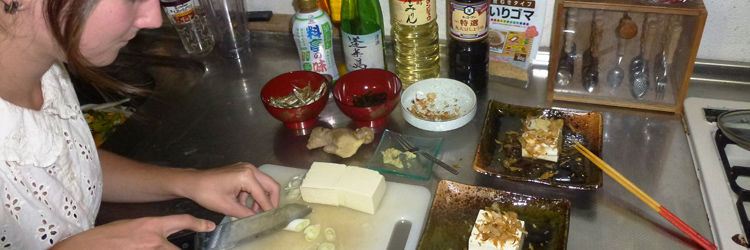
Japanese cooking known as “washoku” is deeply rooted in the traditional dietary cultures. Washoku may be characterized by its variety of fresh ingredients, well-balanced nourishment, and a seasonal supply of colorful vegetables which are closely related to annual events in the local area. Washoku incidentally was registered on the list of the Intangible Cultural Heritage of Humanity by UNESCO in December 2013. Since then, the cultural importance of Japanese dishes has been gaining more and more attention worldwide.
In Kyo-Clue you will have a chance to learn cooking washoku you may have seen on TV and in magazines that are aesthetic and delicate. In doing so, you can also acquire words and expressions unique to the Japanese dishes.
Shojin-ryori
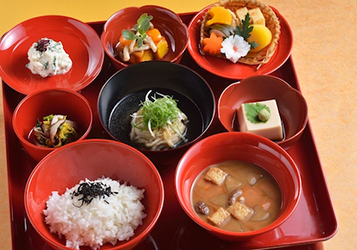
Vegetarian cuisine known as “shojin-ryori” is derived from the Buddhist teaching which prohibits killing animals. Therefore, only grains and vegetables are used in shojin-ryori. In order to bring out the natural taste of the ingredients, shojin-ryori uses the least amount of seasoning. As well, every usable part of the ingredients is fully utilized to avoid any waste. Shojin-ryori regards eating “as an act of receiving life from nature” so that wasting food is least respected. Seeing that more and more people nowadays simply do not care much about wasting food, we would like to offer you an opportunity to appreciate the blessings of nature through learning how to cook shojin-ryori.
Kyo-ryori
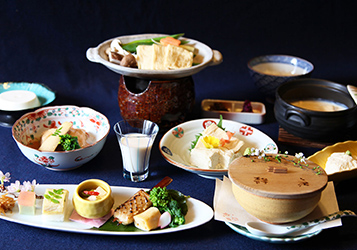
Historically speaking, kyo-ryori has grown out of shojin-ryori and kaiseki-ryori (dainty dishes served in courses) as the major Japanese dishes by incorporating various means and ways of cooking washoku. Since Kyoto is surrounded by the mountains and located away from the sea, freshwater fish from nearby Lake Biwa as well as the local crops from the surrounding areas are the major ingredients for kyo-ryori. Light seasoning is regarded the key to get the most out of such local ingredients. A significant feature of Kyoto cuisine is that you can enjoy its aesthetics as well as its sophisticated taste with all your five senses. In that sense, Kyo-ryori is a representative of the traditional Japanese dishes.
Obanzai
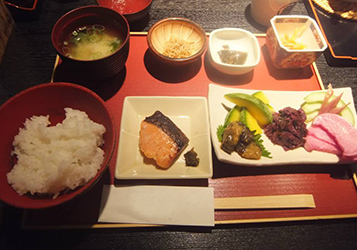
Obanzai refers to ordinary dishes for Japanese cuisine, also called oso-zai in general. They are made from seasonal ingredients which are easily accessible in the locality. Obanzai dishes are easy to cook, and may appear plain. But they are seasoned in such a way that you don’t get tired of its taste. Healthy obanzai is indeed your first step in learning how to cook Japanese cuisine!
Wagashi
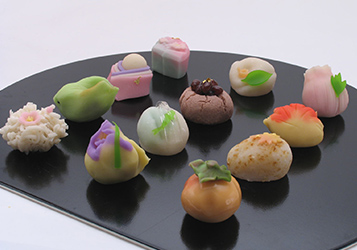
Japanese sweets are called “wagashi,” which include “yokan” (a bar of sweetened and jellied bean paste), “monaka” (a wafer cake filled with red bean jam) and “senbei” (a rice cracker seasoned with soy sauce). They are mostly made from rice flour, peas, sesame or agar. “Azuki” (red beans), one of the most important ingredients in wagashi, contains fiber, vitamin and iron, which are believed to prevent obesity and cancer. Wagashi also contains very little animal fat which may contribute to high cholesterol. The beauty of wagashi goes beyond its health benefits. The taste, appearance, aroma and textures change with and honor the seasons. Very often, wagashi is served together with a bowl of matcha (powdered green tea) which is said to be a nice compliment to sweet wagashi.
![Kyoto Culture Experience Program [ Kyo-Clue.com ]](http://kyo-clue.com/apps/wp-content/themes/kyoclue_design/images/common/header_logo.gif)





